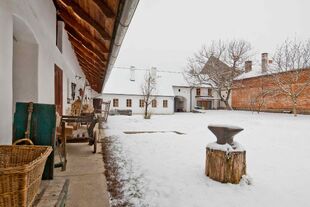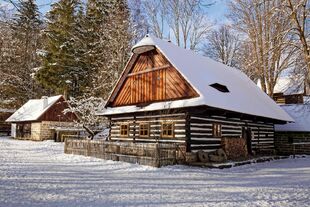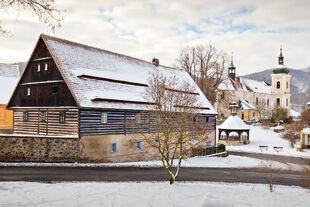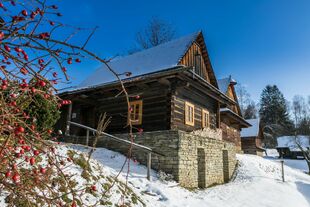IV. Mill Valley
In Mill Valley, you might be interested in the small functional mill and the authentic landscape that we are gradually reshaping in its original form from the middle of the 19th century.
Admission
| Adults | 80 CZK |
|---|---|
| Concessions (students aged 15–26 ; senior citizens over the age of 65) | 70 CZK |
| Children aged 6 - 15 | 50 CZK |
| Children to the age of 6 | Free |
| Family admission (max. 2 adults and up to 4 children to the age of 15) | 160 CZK |
Admission to selected programmes is stipulated on an individual basis.
Admission to events for the public:
Easter in the Village, Autumn in the Village, Christmas in Zubrnice is stipulated on an individual basis.
Admission outside the main season (January – March, November – December)
Tours outside opening hours/outside the main season are possible only for a minimum of 10 people following prior agreement by telephone/e-mail and with a 100% surcharge over and above the regular admission.
Telephone: +420 475 228 267
E-mail: muzeumzubrnice@nmvp.cz
Tours begin every hour on the hour.
More information
More information
Mill valley with the building of the functional mill Týniště No. 27
Length: Drive from the House of Loubí about 15 + 30 minutes tour.
A guide will accompany you on your tour of all the sites!
One of the museum’s peculiarities is the separate large area beyond the village that has five surviving watermills, though three of them are now in ruins. A total of twenty-seven mills were built on twelve kilometres of Luční potok (Meadow Stream), something that is entirely unique in Central Europe. We are adapting the entire area known as Mill Valley to return it to its appearance in the mid-19th century as shown on the cadastral map. This work takes in sensitive planting of large fruit trees in the remnants of the old orchards. Today, the route taken by the visitor to get to the mill already runs through a restored landscape in which mature avenues of fruit trees of old varieties provide welcome shade along well-kept paths.
There are also a wayside shrine and a wayside cross to see here. A row of osier willows cut to a spherical crown will delight visitors in the spring.
The museum is part of the village of Zubrnice, set in the picturesque and dramatic landscape of the Central Bohemian Uplands. The ancient layout of the village square, which is dominated by the originally Gothic Church of Saint Mary Magdalene, has been preserved. The village is characterised by opulent Late Classicist buildings – the consequence of the effective economic exploitation of the local landscape. This involved the cultivation and drying of fruit and the subsequent export of products along the River Elbe to Germany, in particular the lucrative hop trade. Zubrnice has been a protected conservation area since 1995 and makes a particularly attractive impression as a single entity taking advantage of natural building development sensitively complemented by relocated buildings and the unique cultural landscape.
The museum was established as a conservation project, primarily for the Central Bohemian Uplands area, based on village buildings standing on their original sites. These unique buildings will captivate you at first glance. Inside the museum, you will get to see a farmhouse in the village square, a school from the First Republic and a merchant’s store from the 1930s. In Mill Valley, you may be interested in the small working rustic mill and, in particular, the authentic landscape that we are gradually reshaping into the form it took in the middle of the nineteenth century.
In addition to holding large events for the public, the museum also prepares a number of educational programmes, special tours, and exhibitions of traditional folk culture and art. In the main season, you can take a ride on an attractive historical railcar from Ústí nad Labem operated by the Zubrnice Museum Railway Society, which also runs a small museum at the Zubrnice – Týniště train stop.
The museum makes a particularly attractive impression as a single entity taking advantage of natural building development sensitively complemented by relocated buildings and the unique cultural landscape.











